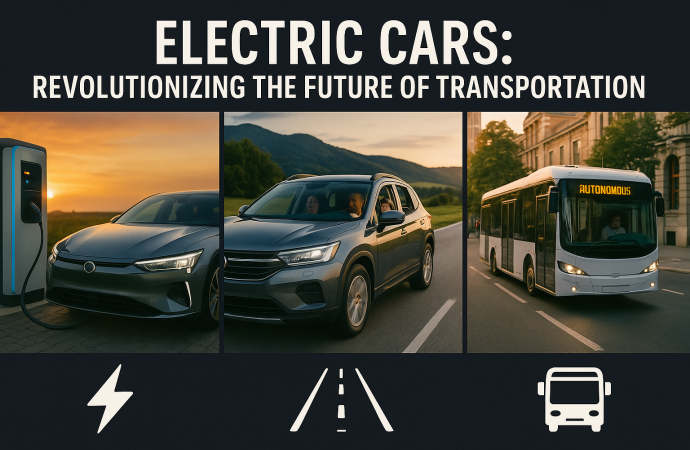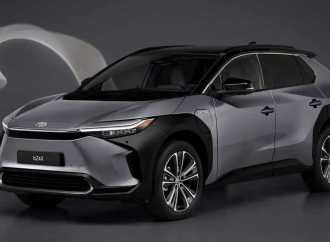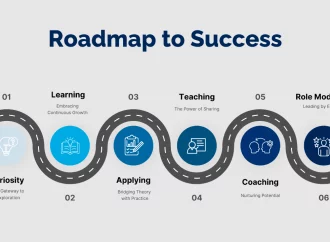Introduction Electric cars have moved from niche curiosities to mainstream game changers. In 2025, they stand at the heart of efforts to cut emissions, boost energy independence, and reshape how we commute. As battery prices fall and charging infrastructure expands, electric vehicles promise to deliver cleaner, quieter rides with lower running costs. This article explores
Introduction
Electric cars have moved from niche curiosities to mainstream game changers. In 2025, they stand at the heart of efforts to cut emissions, boost energy independence, and reshape how we commute. As battery prices fall and charging infrastructure expands, electric vehicles promise to deliver cleaner, quieter rides with lower running costs.
This article explores why electric cars matter, how they work, and what makes them crucial to the future of transportation. You’ll learn about breakthroughs in EV battery technology, the growth of EV charging infrastructure, and real-world electric car benefits. We’ll also cover hurdles like range anxiety and resource sourcing, before showcasing the top EV models to watch in 2025. Whether you’re a curious driver or an industry insider, this guide offers clear insights into the electric revolution on the roads ahead.
What Are Electric Cars?
Electric cars run on one or more electric motors powered by high-capacity batteries. Unlike gasoline engines, they have fewer moving parts—no spark plugs, no gearbox—and emit zero tailpipe pollution. Their heart is the battery pack, which stores electricity drawn from the grid or renewable sources.
How Electric Cars Work
When you press the accelerator, the car’s battery feeds energy to the motor, which turns the wheels. Regenerative braking recovers energy when you slow down, sending it back into the battery. This efficient loop maximizes range and reduces brake wear. Charging takes place via a home charger, public station, or supercharger, depending on your setup.
Types of Electric Cars
Battery Electric Vehicles (BEVs) are fully electric with no fuel engine. Plug-In Hybrid Electric Vehicles (PHEVs) combine a smaller battery and electric motor with a gasoline engine for longer trips. Hybrid Electric Vehicles (HEVs) rely on regenerative braking and a small battery but charge only via the engine. BEVs lead the zero-emission charge as battery tech improves.
Why Electric Cars Matter for the Future of Transportation

Image by: Yandex.com
As cities swell and climate concerns mount, electric mobility offers a path to cleaner air and lower greenhouse gas emissions. By swapping tailpipes for batteries, we cut carbon and lessen dependence on foreign oil.
Environmental Impact
Transportation accounts for a quarter of global emissions. Electric cars produce no exhaust gases, reducing smog and improving urban air quality. When charged with renewable energy, their lifecycle emissions fall far below those of gasoline vehicles. This shift plays a key part in meeting international climate goals.
Economic Advantages
Electric cars often cost less per mile than gas cars. Electricity is cheaper than petrol, and maintenance costs drop with fewer moving parts. Governments worldwide offer incentives—tax credits, rebates, and HOV-lane access—to encourage adoption. Over the long term, drivers save money, and countries save on energy imports.
Tip: If you switch to an EV, check for local charging incentives and home charger rebates to lower your upfront costs.
Advances in EV Battery Technology
The battery is the bottleneck in electric cars. Better batteries mean longer range, faster charging, and lower prices.
Battery Chemistry Improvements
Today’s lithium-ion batteries have seen cost cuts of over 80 percent in a decade. Innovations like nickel-rich cathodes boost energy density, letting cars go 300-plus miles on a single charge. Next steps include silicon anodes and advanced electrolytes to extend lifespan.
Solid-State Batteries and Beyond
Solid-state batteries replace liquid electrolytes with solid ones, reducing fire risk and boosting energy density. They promise 10-minute charge times and ranges over 400 miles. While still under development, major automakers plan to bring them to market by 2025.
Tip: Watch for announcements from automakers like Toyota and QuantumScape, which are racing to commercialize solid-state packs.
EV Charging Infrastructure Growth
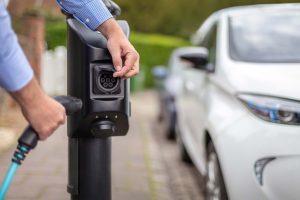
Image by: Yandex.com
A robust EV charging infrastructure is crucial for mass adoption. More chargers mean fewer worries about running out of juice.
Home Charging vs. Public Charging
Most owners charge overnight at home using Level 2 AC chargers. These provide 25–30 miles of range per hour. Public charging offers both Level 2 and DC fast chargers, which can add 80 percent charge in 20–40 minutes.
Fast Charging Networks
Automakers and networks like Tesla Supercharger, Electrify America, and Ionity are rapidly expanding fast-charge stations along highways and in cities. By 2025, major routes across North America, Europe, and Asia will feature reliable DC fast charging every 50–100 miles.
Tip: Use apps like PlugShare or your car’s navigation to find chargers, check real-time availability, and plan routes with confidence.
Electric Car Benefits for Drivers
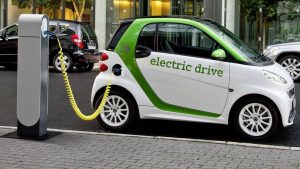
Image by: Yandex.com
Beyond environmental gains, electric cars deliver perks that make driving fun and efficient.
Lower Operating Costs
Electricity costs less per mile than petrol. Maintenance bills shrink without oil changes or exhaust repairs. Many insurers offer discounts, and EV resale values remain strong as demand outstrips supply.
Performance and Driving Experience
Electric motors deliver instant torque, giving EVs brisk acceleration. The low center of gravity from heavy batteries under the floor improves handling. A quiet cabin and smooth power delivery make for a refined ride.
Tip: Test drive an EV to feel the difference—you might find the instant throttle response addictive.
Challenges Facing Electric Mobility
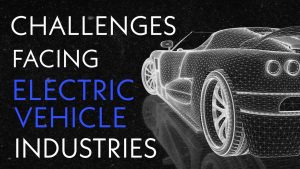
Image by: Yandex.com
No revolution is flawless. EV adoption faces hurdles in range, resources, and equity.
Range Anxiety and Solutions
Early EVs offered limited range, but modern models routinely exceed 250 miles. Still, charging gaps can cause anxiety. Expanding fast-charger networks and improved batteries help. Vehicle-to-grid tech may also let EVs store and feed energy back to the grid in emergencies.
Raw Material Sourcing and Recycling
Batteries rely on lithium, cobalt, and nickel, creating environmental and ethical concerns. Companies now source these minerals responsibly, invest in recycling programs, and explore alternative chemistries like iron-phosphate cells.
Tip: Support automakers with strong sustainability pledges and transparent supply chains to encourage responsible production.
Top EV Models to Watch in 2025
The range of EV models grows every year. Here are key picks for 2025:
| Model | Range (miles) | Charge 20–80% (mins) | Starting Price (USD) |
|---|---|---|---|
| Tesla Model 3 | 333 | 30 | 40,000 |
| Chevrolet Bolt EUV | 255 | 40 | 33,000 |
| Ford Mustang Mach-E | 305 | 45 | 45,000 |
| Hyundai Ioniq 5 | 303 | 35 | 42,000 |
| Rivian R1T | 314 | 40 | 67,000 |
| Lucid Air | 406 | 20 | 87,400 |
Affordable Models
Tesla Model 3 and Chevrolet Bolt EUV lead for value, offering solid range, fast charging, and proven reliability under $45,000.
Luxury and Performance Models
Rivian R1T and Lucid Air blend range, speed, and premium features for buyers willing to spend more.
Tip: Consider total cost of ownership—Factor in fuel savings, maintenance, and incentives when comparing EVs.
The Road Ahead for Sustainable Transport
Electric cars link to broader shifts in renewable energy, smart cities, and shared mobility.
Integration with Renewable Energy
Charging EVs with solar or wind power slashes lifecycle emissions. Home solar systems with battery storage let owners charge overnight directly from their panels. Utilities also work on time-of-use rates that encourage off-peak charging.
Policy and Market Trends
Governments worldwide set targets to phase out gasoline cars by 2030–2040. Subsidies and stricter emissions rules push automakers toward all-electric lineups. Shared electric vehicles and fleets—like buses and delivery vans—drive urban EV growth.
Tip: Keep an eye on local policies and incentives, as they can drastically cut your EV purchase and operating costs.
Conclusion
Electric cars are more than a trend; they’re a major shift in how we move. Advances in EV battery technology, expanding EV charging infrastructure, and clear electric car benefits position electric vehicles at the core of the future of transportation. While challenges like range anxiety and mineral sourcing remain, innovations in solid-state batteries, smart grids, and sustainable supply chains promise solutions. With a growing lineup of EV models for every budget, 2025 is the year to consider making the switch. Embrace cleaner, quieter driving, save on fuel, and join the electric revolution on our roads.
Call-to-Action (CTA): Ready to go electric? Check out our interactive EV comparison tool and find the perfect electric car for your needs today!

